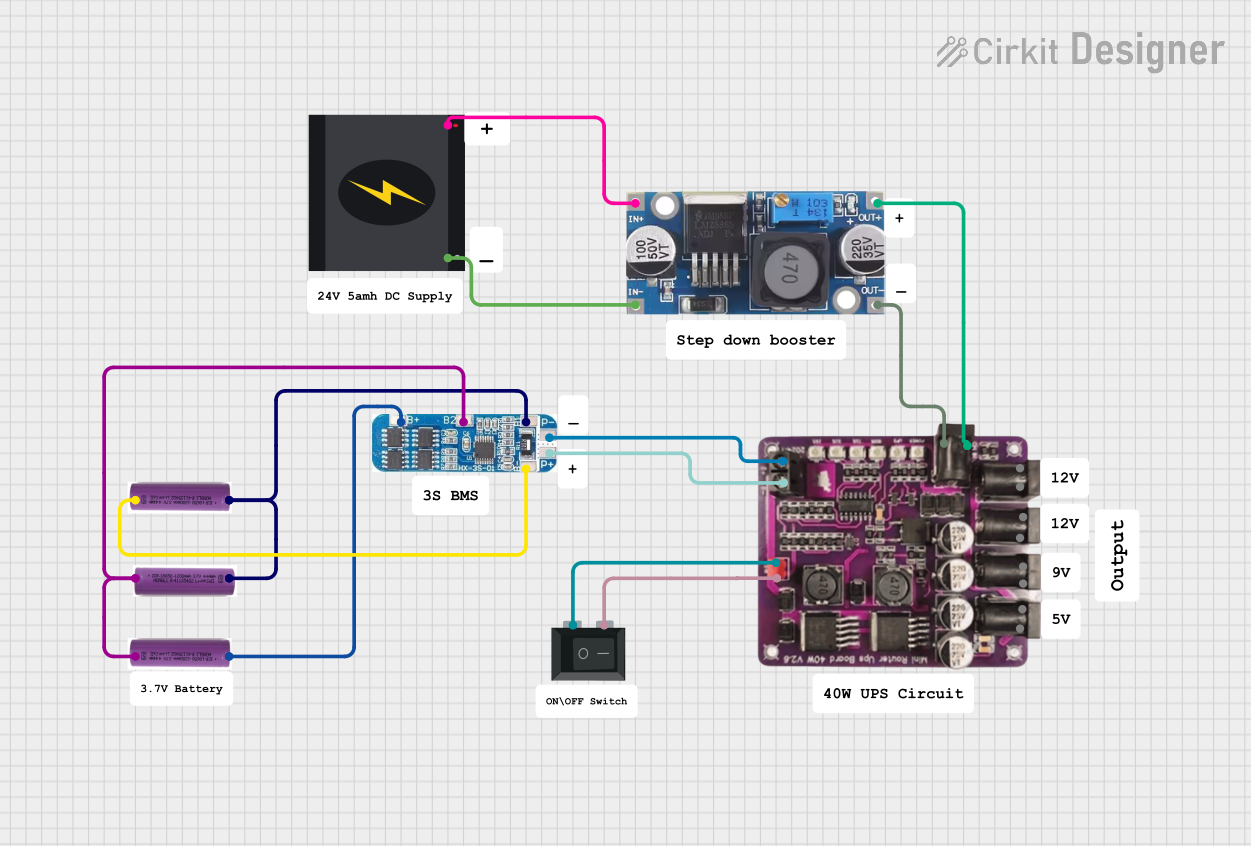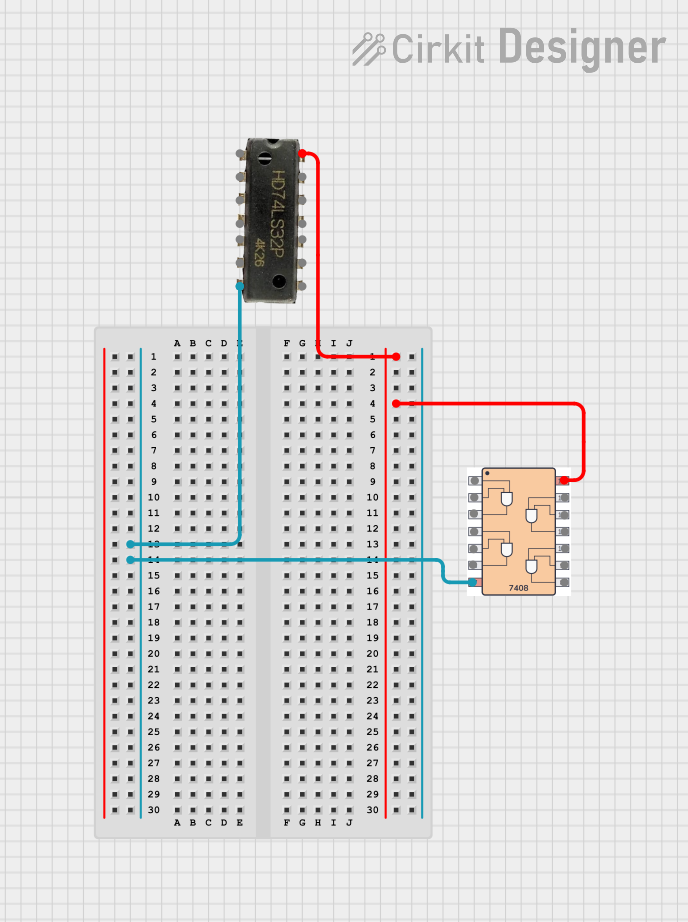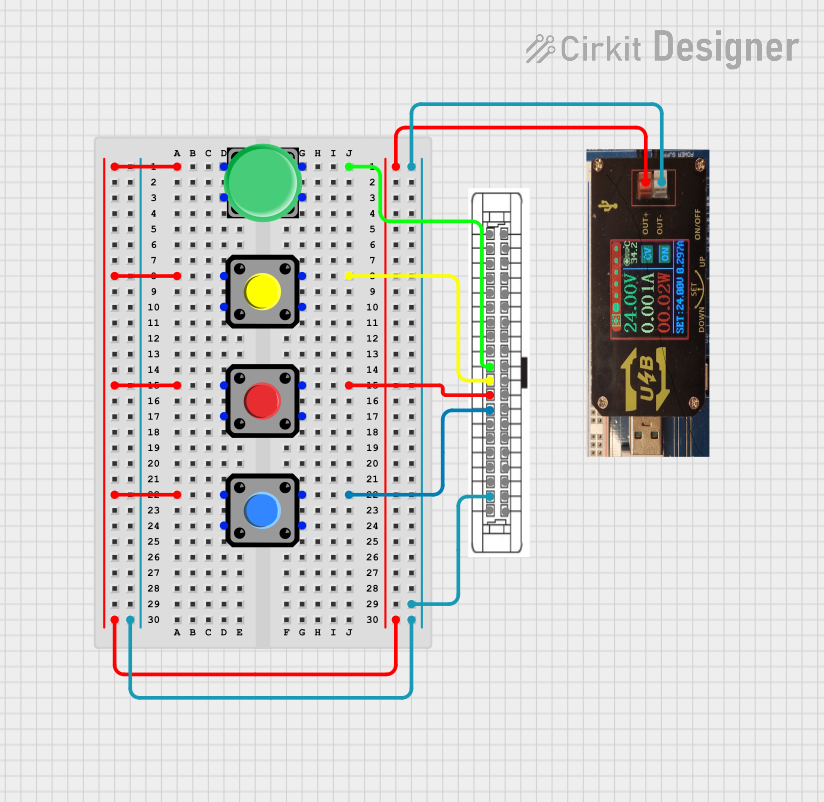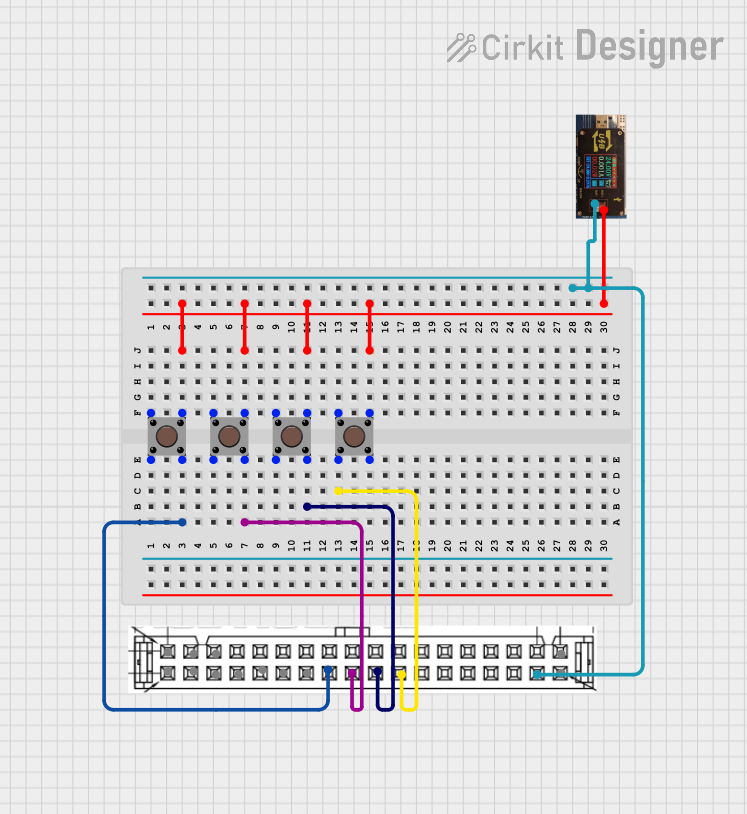
How to Use 4029: Examples, Pinouts, and Specs

 Design with 4029 in Cirkit Designer
Design with 4029 in Cirkit DesignerIntroduction
The 4029 IC is a versatile presettable up/down counter that integrates a four-stage binary or BCD (Binary Coded Decimal) counter with a full complement of external control inputs. This component is widely used in digital electronics for counting purposes, frequency division, and as a building block for more complex counters. Common applications include digital clocks, frequency counters, calculators, and in various projects where numerical operations are required.
Explore Projects Built with 4029

 Open Project in Cirkit Designer
Open Project in Cirkit Designer
 Open Project in Cirkit Designer
Open Project in Cirkit Designer
 Open Project in Cirkit Designer
Open Project in Cirkit Designer
 Open Project in Cirkit Designer
Open Project in Cirkit DesignerExplore Projects Built with 4029

 Open Project in Cirkit Designer
Open Project in Cirkit Designer
 Open Project in Cirkit Designer
Open Project in Cirkit Designer
 Open Project in Cirkit Designer
Open Project in Cirkit Designer
 Open Project in Cirkit Designer
Open Project in Cirkit DesignerTechnical Specifications
Key Technical Details
- Supply Voltage (Vcc): 3V to 15V
- Operating Temperature: -55°C to +125°C
- Counting Mode: Binary or BCD (selected by mode control input)
- Counting Sequence: Up or Down (controlled by up/down input)
- Speed: Typically 6MHz at Vcc = 10V
- Output Current: 3.5mA at Vcc = 10V
Pin Configuration and Descriptions
| Pin Number | Name | Description |
|---|---|---|
| 1 | Q4 | Fourth bit of the counter (MSB in 4-bit mode) |
| 2 | Q1 | First bit of the counter (LSB) |
| 3 | Q2 | Second bit of the counter |
| 4 | Q3 | Third bit of the counter |
| 5 | Carry Out | Goes high on overflow/underflow |
| 6 | Down/Up | Determines counting direction: Low for up, High for down |
| 7 | Vss (GND) | Ground reference (0V) |
| 8 | Clock Inhibit | Disables clock when high |
| 9 | Clock | Clock pulse input |
| 10 | Binary/Decade | Selects counting mode: Low for binary, High for BCD |
| 11 | Carry In | Enables cascading of multiple counters |
| 12 | Preset Enable | Activates preset inputs when low |
| 13 | Data A (Preset 1) | Preset input 1 |
| 14 | Data B (Preset 2) | Preset input 2 |
| 15 | Data C (Preset 3) | Preset input 3 |
| 16 | Data D (Preset 4) | Preset input 4 (MSB in 4-bit mode) |
| 17 | Vcc | Positive supply voltage |
Usage Instructions
How to Use the 4029 in a Circuit
- Power Supply: Connect Vcc to a suitable power supply (3V to 15V) and Vss to ground.
- Counting Mode: Set the Binary/Decade pin to high for BCD counting or low for binary counting.
- Direction Control: Apply a high or low signal to the Down/Up pin to set the counting direction.
- Clock Signal: Apply a clock signal to the Clock pin to increment or decrement the counter.
- Presetting the Counter: To preset the counter, set the Preset Enable pin low and apply the desired count to the Data A-D pins.
- Clock Inhibit: To pause the counter, set the Clock Inhibit pin high.
Important Considerations and Best Practices
- Ensure that the power supply voltage does not exceed the maximum rating of 15V.
- Use a decoupling capacitor close to the Vcc pin to filter out noise.
- Avoid floating inputs by connecting unused control pins to Vcc or Vss as appropriate.
- When cascading counters, connect the Carry Out of one counter to the Carry In of the next.
- Use a pull-up or pull-down resistor on the Preset Enable pin to avoid accidental triggering.
Troubleshooting and FAQs
Common Issues
- Counter Not Counting: Check the Clock Inhibit and Preset Enable pins to ensure they are not disabling the counter. Also, verify the clock signal is present and within the operating frequency range.
- Incorrect Counting Mode: Ensure the Binary/Decade pin is correctly set for the desired counting mode.
- Unstable Outputs: This can be caused by noise or floating inputs. Ensure all unused inputs are tied to a known logic level.
FAQs
Q: Can the 4029 IC be used to count in decimal? A: Yes, by setting the Binary/Decade pin high, the 4029 will count in BCD mode, which is suitable for decimal counting.
Q: How can I reset the counter to zero? A: To reset the counter, preset it to zero by setting the Preset Enable pin low and applying a low signal to all Data A-D pins.
Q: What is the maximum frequency the 4029 can count? A: The maximum frequency is typically 6MHz at a Vcc of 10V, but this can vary with supply voltage and temperature.
Example Code for Arduino UNO
// Example code to interface a 4029 counter with an Arduino UNO
const int clockPin = 3; // Connect to Clock pin of 4029
const int upDownPin = 4; // Connect to Down/Up pin of 4029
void setup() {
pinMode(clockPin, OUTPUT);
pinMode(upDownPin, OUTPUT);
// Set the counter to count up
digitalWrite(upDownPin, LOW);
}
void loop() {
// Generate a clock pulse
digitalWrite(clockPin, HIGH);
delay(10); // Wait for 10 milliseconds
digitalWrite(clockPin, LOW);
delay(10); // Wait for 10 milliseconds
// The counter will increment with each pulse
}
Remember to adjust the pin numbers and connections according to your specific setup. The above code will make the 4029 counter increment with each clock pulse. To count down, simply set the upDownPin to HIGH.